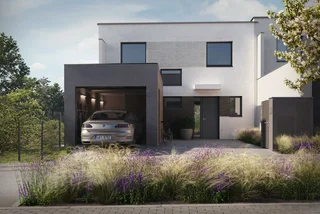The Czech Republic’s wines have vastly improved, and if you know the right producers you can find some quite enjoyable bottles. (The Moravian Wine Route consists of a 1,200 kilometer network of trails through the wine growing villages!) We asked some local wine connoisseurs to name their favorite little pockets of wine country for tasting the season’s best.
Znojmo
PARTNER ARTICLE
The western most Moravian wine growing region consists of more than 1,300 wine growers and specializes in the white Veltlínské zelené and Müller Thurgau and red Svatovavřinecké. This is one of the oldest wine growing areas and has a number of grape celebrations year round. Highlights of places to visit include the Painted Wine Cellar in Šatov, the Šobes vineyard and Podyjí National Park. The town of Znojmo is the best place to base yourself. To bike, the Znojmo section of the wine route connects almost 60 towns over 164 kilometers of trails. To sleep, Lahoferoffers rooms and wine tastings in a reconstructed 14th century building; they also have a vineyard you can visit. Close to Znojmo in the town of Dobšice is Pension Černý sklep which offers a wine cellar, tastings, backyard and barbecue.
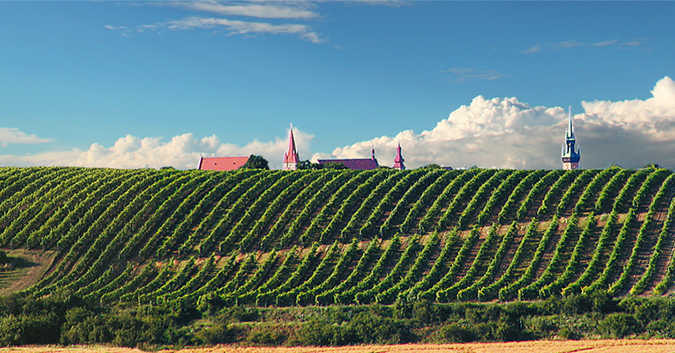
Znojmo, source: hudbaznojmo.cz
Mikulov
Arguably the best known wine region, the town of Mikulov is delightful to visit and offers some of the most accessible wineries to tour. Přemek Veselý owns the lovely Tempo Allegro, a Prague 1 wine bar specializing in both Czech and Italian varieties. He was recently touring some wineries looking for some nice bottles and has two top tips for a visit – hitting the nearby National Wine Salon in Valtice and biking through the Pálava hills. These hills are what gives wines from Mikulov their distinct fresh taste. Mikulov is best known for its white Ryzlink vlašský and Chardonnay and of course Pálava while a good choice for red would be Svatovavřinecké or Frankovka. The Wine Salon offers the opportunity to taste the top 100 wines in the Czech Republic, or go slow with a smaller sommelier guided tasting.
The region is also popular with Taste of Prague, a company that organizes private wine tours to Moravia. A tour like this would be a great intro to a specific region, or a chance to delve into Czech wines more deeply as they are arranged based on participants’ requests. Co-owner Jan recommends the Sonberk winery with its beautiful views over the Pálava hills and next door the Gotberg winery. If you are looking for a more intimate experience, he suggests Gala or Stapleton Springer, which interestingly specializes in reds.
Mikulov is the largest city in the region, but every town has a number of pensions, many of which also offer small tastings, typically from a smaller winery. Veselý recommends Amici Miei, which in addition to beds, also has a vinárna with Moravian and Italian wines.
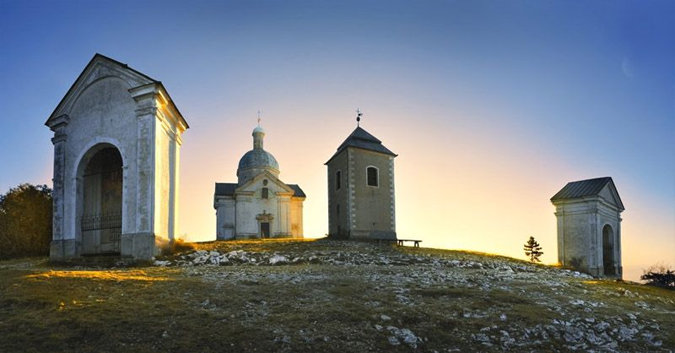
Mikulov, source: czechtourism.cz
Velké Pavlovice
Velké Pavlovice, and its main wine growing town of Velké Bílovice is one of the sunniest and warmest areas in the Czech Republic. Red wine fans should look for producers of Svatovavřinecké and Frankova from this area; the best whites include Veltlínské zelené and Rulandské šedé. The area is close to Brno, so if staying in the Czech Republic’s second city, a quick trip out to these wine growing towns is a good option. The town of Čejkovice’s history dates back to the Knights of the Templar and you can tour the cellars they built, notable for their massive corridors allegedly built big so the knights could ride through them on horses.
Other interesting sites in the area include Slavkov, where the Napoleonic Battle of Austerlitz took place, and almost a must-see are the Moravian Karst, gorgeous stalactite caves explored by boat. The biking route here offers 110 kilometers of paths and a recommended start (or end) is the town of Velké Pavlovice with its number of open cellars.
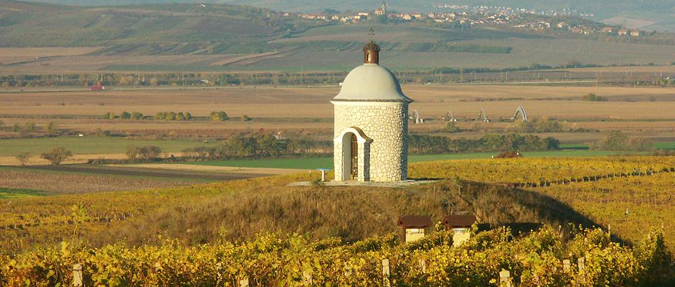
Velké Bílovice, source: velkebilovice.cz
Slovácko
Slovácko offers something quite different to its wine growing neighbors; a charming tradition of folk costumes, songs and dances. This unique folklore makes a beautiful backdrop for the wine; best of the bunch includes Müller Thurgau, Ryzlink Rýnský, Svatovavřinecké and Frankova. For a very local treat, search out a white Moravský muškát from the town of Polešovice. The biggest towns in the region are Břeclav and Uherské Hradiště. The most recommended wine related visit here is to the historic wine cellars called Plže near the village of Petrov. A close second is to Mutěnice with its rare complex of 500 wine cellars many with their original colorful decorations.
Bikers here have 75 kilometers of paths to explore, basing yourself in Uherské Hradiště is a better bet if you want to bike. A visit to Velehrad, one of the country’s most significant pilgrimage places; checking out the village of Tupesy, known for its pottery and ceramics or exploring Milotice, one of the most beautiful Baroque chateaus in the country will give you at least an afternoon off the wine.
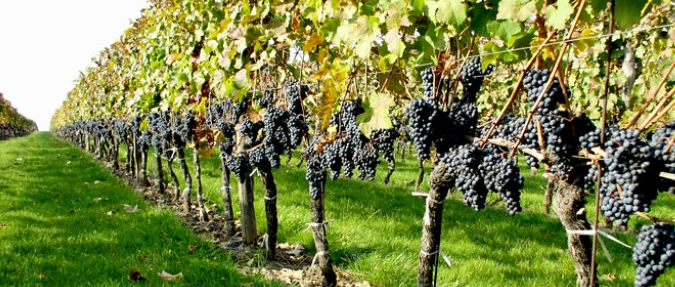
Slovácko, source: vinarstvi-glosovi.cz
Litoměřice
If you want a mini-wine getaway closer to Prague, try Litoměřice. Bohemia does make wine, and while Mělník is typically considered the heart of the Bohemian vineyards, Litoměřice is ready to show off her vintages, with a lovely exposition and tasting in the town’s castle. Lenka Gottwaldová, the castle’s manager says they were inspired by the Wine Salon in Valtice and hope to expose visitors to the joys of Bohemian wine in a unique way. The Gothic castle is an intriguing place for a tasting of wines from both Litoměřice and Mělník.
The town of Litoměřice is known for its beautiful locale on the confluence of the Elbe and Ohře rivers, along with its charming downtown filled with Gothic, Renaissance and Baroque buildings. Walk over to Dómský vrch with the Cathedral of St. Stephen and bell tower. Opposite the chapel of the Church of the Seventh Day Adventists, you can see the house where Czech poet Karel Hynek Mácha lived and died. Velké Žernoseky is the city’s best known winery. Terezín is also a short bus ride away.
If you want to guarantee you have a wine tour in English, be sure to arrange a tasting in advance. Znovín Znojmo, Sonberk and Gotberg are all good bets. Jan from Taste of Prague’s best recommendation is to pace yourself. Enjoy both the wine and cultural offerings where you are; without trying to see the entire region in one go. All these regions boast packed event calendars including music festivals, folk fairs, historic recreations and more. Czech Tourism has an events calendar, but more comprehensive information can usually be found on individual city websites. For information about wine events across the country, check Wine of the Czech Republic (more information in Czech than English).

Litoměřice, source: wikipedia












 Reading time: 5 minutes
Reading time: 5 minutes 















